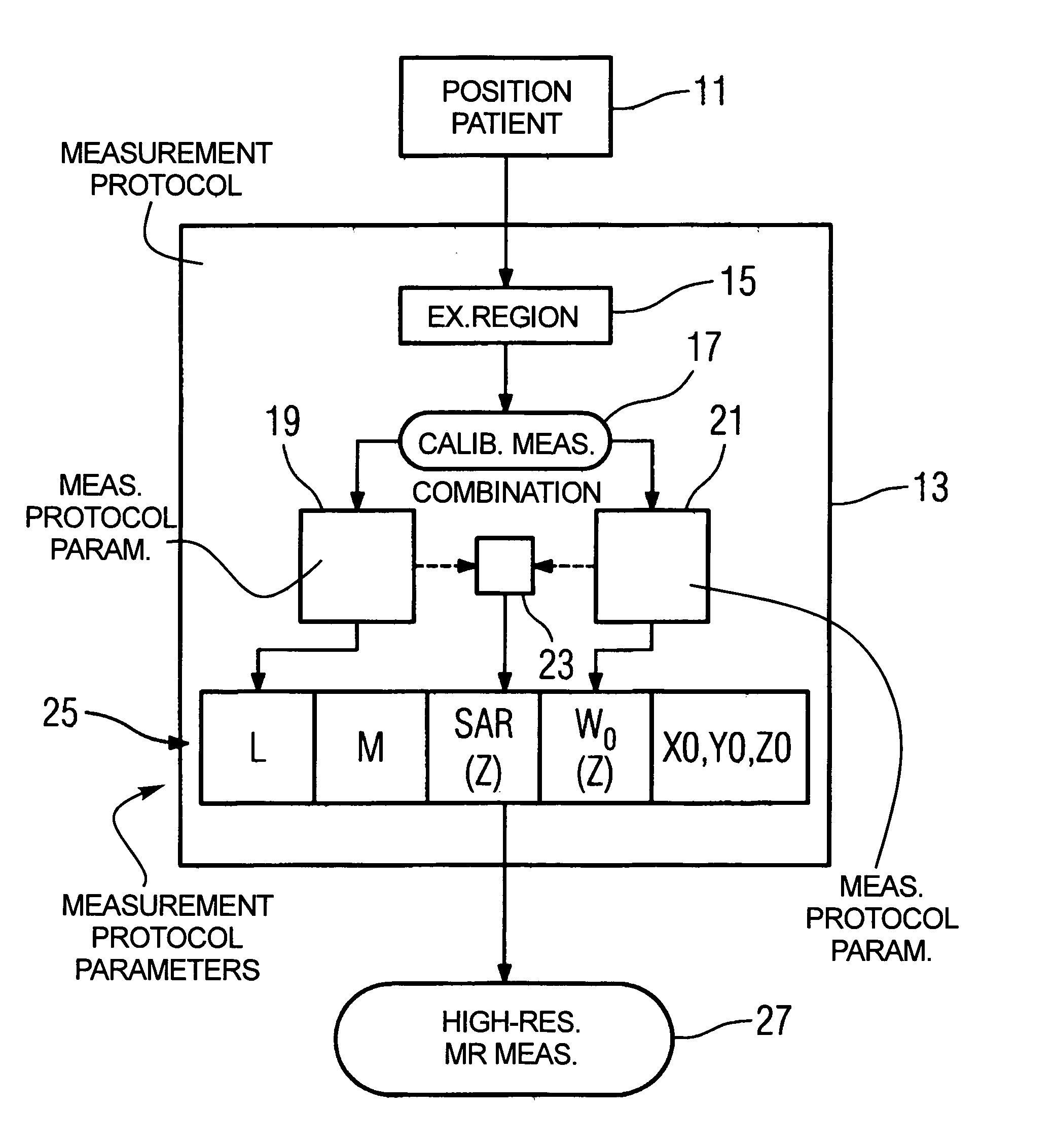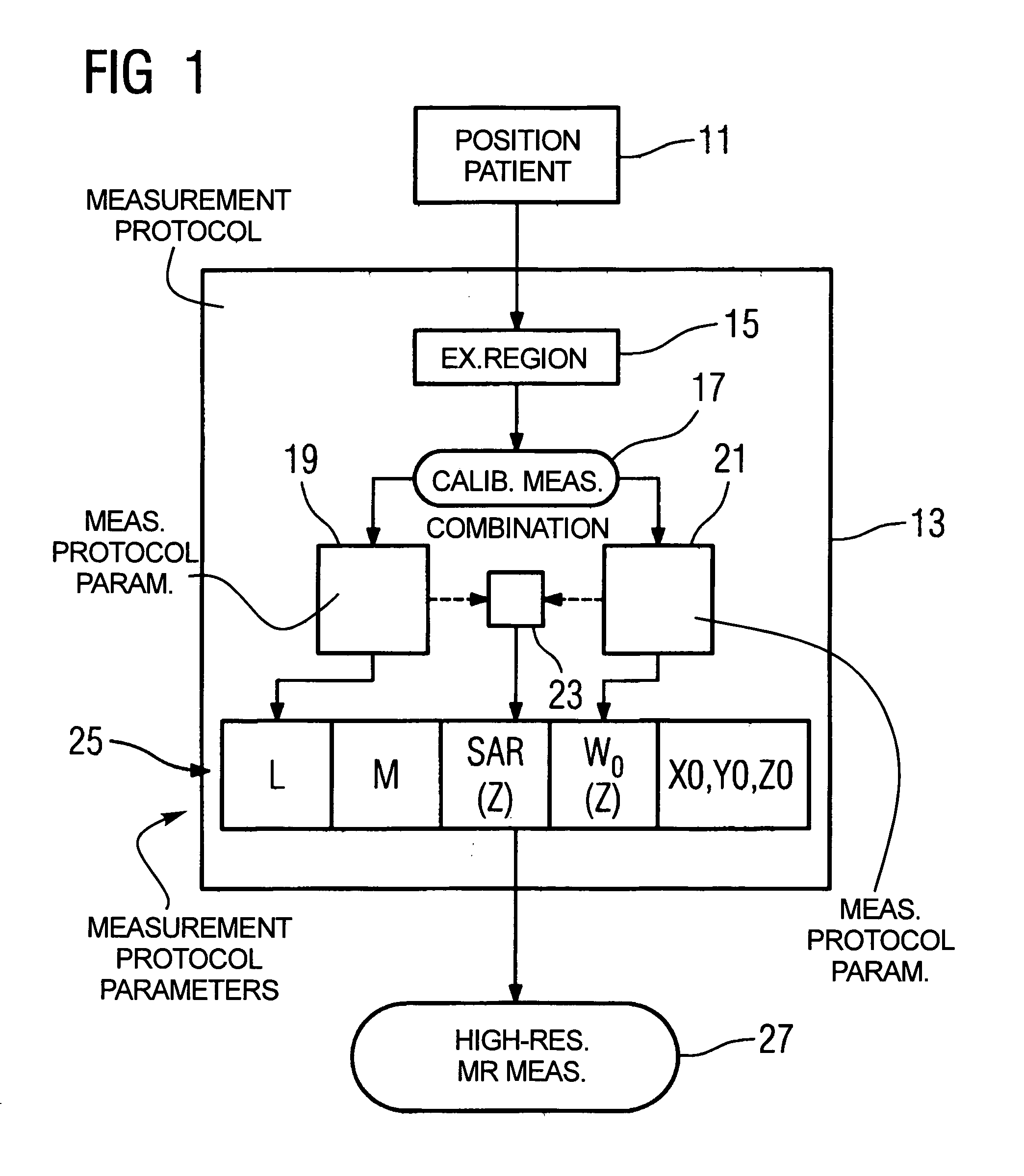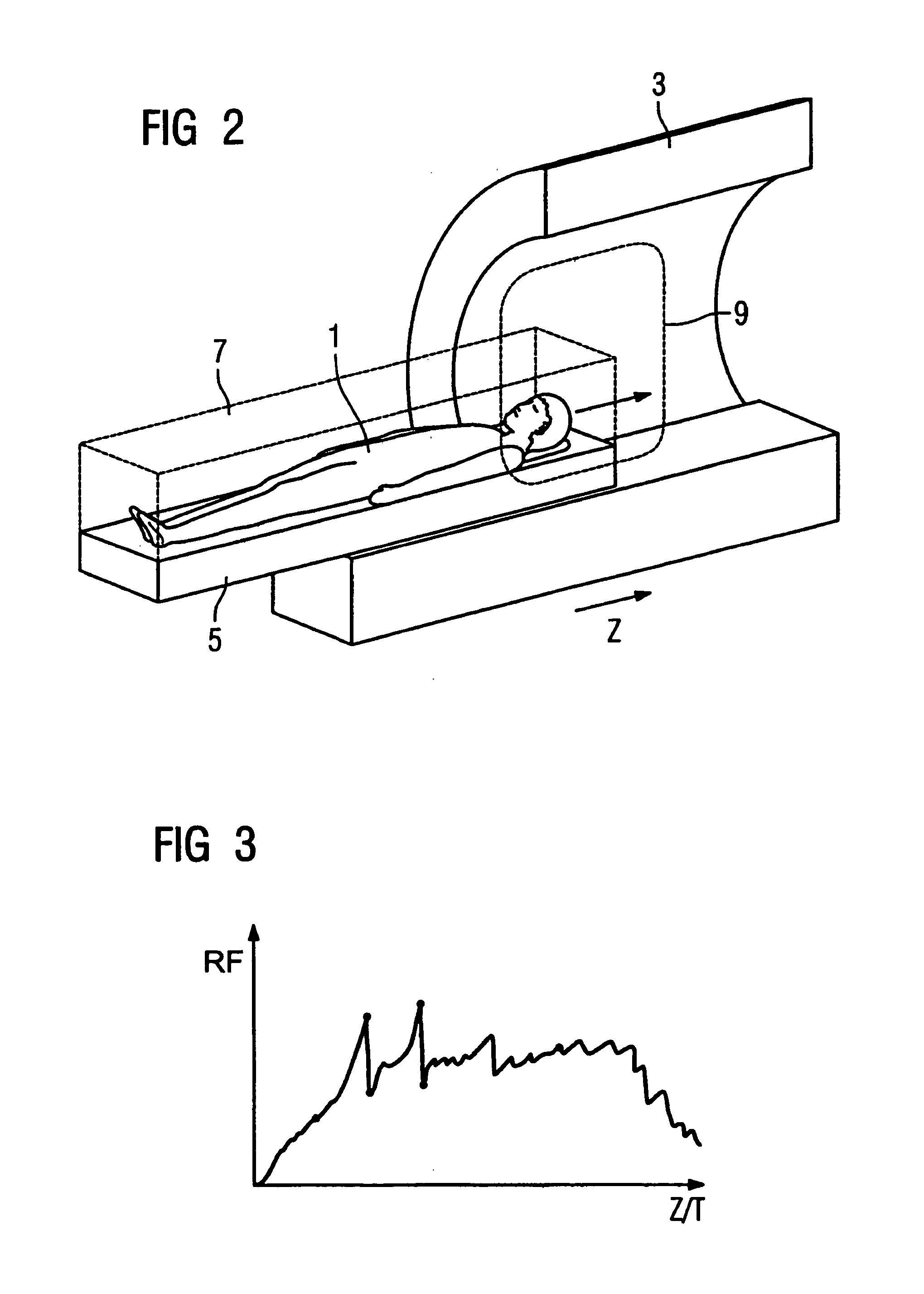Method for implementation of a magnetic resonance examination of a patient
a technology for magnetic resonance examination and patient, applied in the direction of magnetic variable regulation, using reradiation, instruments, etc., can solve the problems of invalid acquisition value, inability to plan measurement over the entire patient region, and small scanner, so as to achieve shortened measurement time, improved image quality, and improved resolution
- Summary
- Abstract
- Description
- Claims
- Application Information
AI Technical Summary
Benefits of technology
Problems solved by technology
Method used
Image
Examples
Embodiment Construction
[0034]FIG. 1 shows a flowchart of an exemplary embodiment of the method according to the invention. FIG. 2 shows an apparatus to implement the method. A patient 1 is to be “non-locally” examined with a magnetic resonance apparatus 3 that has a movable patient bed 5. “Non-locally” thereby means that an examination volume 7 is larger than an acquisition volume 9 of the magnetic resonance apparatus 3. The patient 1 on the patient bed 5 is moved in the z-direction (i.e. in the axial direction) through the acquisition volume 9 of the magnetic resonance apparatus 3 for acquisition of data from the entire examination volume 7.
[0035]The examination of the patient 1 ensues as follows. First, a positioning 11 of the patient 1 on the patient bed 5 occurs. As needed, local radio frequency coils may also positioned on the body of the patient 1. A measurement protocol 13 is subsequently created, wherein an establishment 15 of the examination region 7 ensues. For example, “whole body” could be set...
PUM
 Login to View More
Login to View More Abstract
Description
Claims
Application Information
 Login to View More
Login to View More - R&D
- Intellectual Property
- Life Sciences
- Materials
- Tech Scout
- Unparalleled Data Quality
- Higher Quality Content
- 60% Fewer Hallucinations
Browse by: Latest US Patents, China's latest patents, Technical Efficacy Thesaurus, Application Domain, Technology Topic, Popular Technical Reports.
© 2025 PatSnap. All rights reserved.Legal|Privacy policy|Modern Slavery Act Transparency Statement|Sitemap|About US| Contact US: help@patsnap.com



